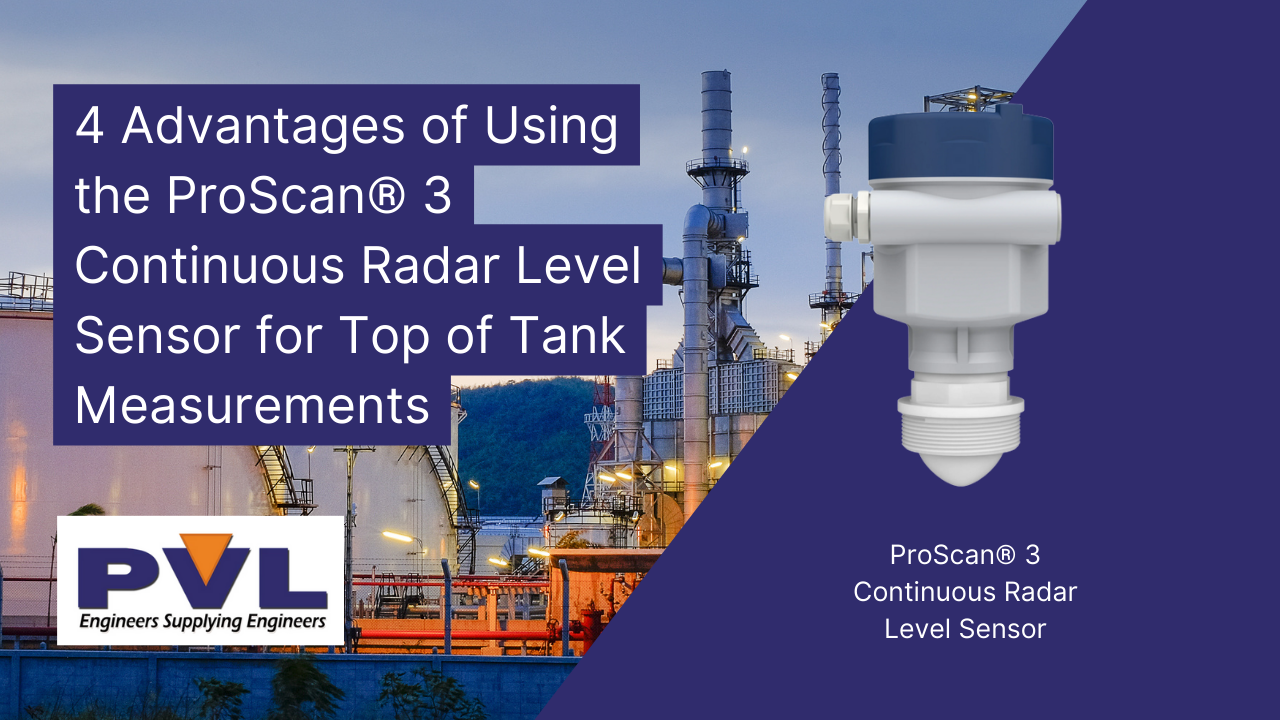
4 Advantages of Using the ProScan® 3 Continuous Radar Level Sensor for Top of Tank Measurements
In today's industrial landscape, precision and reliability are paramount for liquid level measurement. Companies dealing with high purity fluids, corrosive materials, or extreme temperature and pressure conditions understand the importance of selecting the right tools. One such tool gaining prominence in level measurement is the ProScan® 3 Continuous Radar Level Sensor, operating at an impressive 80GHz frequency.
In this article, we explore the various benefits of employing this cutting-edge technology for top-of-tank measurements.
1. High Purity Liquids
Traditional measurement methods can pose a risk of contamination in applications where the purity of liquids is a non-negotiable requirement. The ProScan® 3 Continuous Radar Level Sensor mitigates this concern by allowing measurements through the vessel's top. This non-invasive approach ensures that neither the sensor nor the process connection directly interacts with the sensitive material inside the tank, thus preserving its purity.
2. Highly Corrosive Material
Many industries deal with highly corrosive materials that are stored in plastic vessels. The ProScan® 3's capability to measure from the top of the tank proves invaluable in such scenarios. The risk of material leakage or off-gassing is significantly reduced by eliminating the need to open the tank for measurement. Moreover, this technology does not necessitate using exotic materials for sensor construction, even in harsh and corrosive environments, offering a cost-effective and efficient solution.
3. High Temperature or Pressure Vessels
Conventional radar level sensors may have limitations regarding extreme temperature and pressure conditions. The ProScan® 3, however, breaks through these barriers by enabling radar measurements through the top of vessels. This opens up a world of possibilities for industries working with high-temperature and high-pressure vessels that exceed the typical specifications of radar transducers, ensuring that measurements can be reliably made without compromise.
4. Mounting Considerations
Mounting the ProScan® 3 for top-of-tank measurements requires careful consideration, particularly ensuring accurate and consistent readings. To achieve the best results, the following measures should be taken:
- Preferably, use sight glasses inclined at a minimum of 10 degrees to allow energy that does not penetrate the glass to reflect away from the sensor.
- Leveraging the narrow 3-degree beam of the 80GHz ProScan® 3 is useful when mounting the sensor above sight glasses or tall nozzles. Ensure a clear path for reflected energy to move away from the sensor to minimise false reflections.
Consider the following steps to minimise partial signals reflected by the top of the vessel:
- 1. Locate the vessel indoors to avoid moisture or precipitation affecting the measurement.
- 2. Construct a protective cover to prevent snow, rain, or condensation from forming between the sensor and the tank's top.
- 3. Place the sensor over a curved portion of the plastic tank to encourage lateral reflection of any signals.
- 4. Maintain a minimum distance of 100 mm (4 in) between the sensor and the tank's surface to provide space for reflected signals to move laterally.
- 5. An inclined surface allows moisture or condensation inside the vessel to drip away.
- 6. Ensure that the sensor is not too close to the sidewall of plastic or FRP tanks, and be wary of metallic objects outside of the vessel that the sensor could detect.
- 7. Aim to have the radar signal strike the liquid's surface at a 90-degree angle for optimal performance.
Summary
The ProScan® 3 Continuous Radar Level Sensor operating at 80GHz offers many advantages. It is an excellent choice for industries dealing with high purity liquids, highly corrosive materials, and extreme temperature and pressure conditions. When coupled with proper mounting techniques, this technology can revolutionise level measurement in various applications, ensuring precision, reliability, and peace of mind for businesses needing accurate liquid level data.

